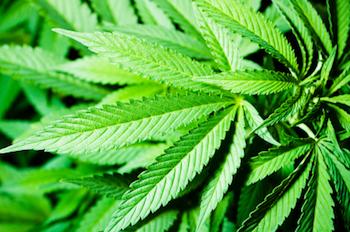It is estimated that more than 2.3 million people worldwide have multiple sclerosis (MS), a chronic disease of the central nervous system - the brain, spinal cord and optic nerves.
MS is thought to be an autoimmune disease, whereby immune-system induced inflammation damages the protective coating of nerve fibers, called myelin. Symptoms of MS vary but commonly include loss of balance and coordination, blurred vision, extreme fatigue, tremors and numbness.
Past studies have suggested that coffee consumption may protect against other neurological diseases, including Alzheimer's disease and Parkinson's disease. In this latest study, researchers say the beverage could also protect against MS.
To reach their findings, study author Dr. Ellen Mowry, of Johns Hopkins University School of Medicine in Baltimore, MD, and colleagues analyzed data from two separate population-based case-control studies that looked at the link between coffee consumption and MS.
The first study was a Swedish study involving 1,629 people with MS and 2,807 healthy controls, while the second study was a US study involving 1,159 people with MS and 1,172 healthy controls.
Both studies recorded coffee consumption among people with MS at 1 and 5 years prior to onset of symptoms, and the Swedish study also recorded coffee consumption among these participants 10 years before symptoms began. Coffee intake of those with MS was compared with the healthy controls at similar time points.
The researchers also identified a protective effect against MS among participants who consumed large amounts of coffee at 5 and 10 years prior to onset of symptoms.
From the US study, the team also found that participants who did not drink coffee in the year prior to symptom onset were approximately 1.5 times more likely to develop MS, compared with those who consumed at least four cups of coffee a day.
The team says the protective effect of coffee consumption against MS may be down to the main ingredient of the beverage - caffeine. They explain:
The Swedish Medical Research Council, the Swedish Research Council for Health, Working Life and Welfare, the US National Institute of Neurological Disorders and Stroke, the National Institute of Environmental and Health Sciences and the National Institute on Aging were among the supporters of this research.
Last month, a study published in the Journal of the National Cancer Institute claimed coffee consumption may reduce the risk of melanoma skin cancer by a fifth, while more recently, UK researchers found drinking three to four cups of coffee a day could reduce the risk of endometrial cancer in women by up to 19%.
Our Knowledge Center article - "What are the health benefits of coffee?" - looks at some of the other ways coffee may be good for us, while noting some of its risks to health.
Drinking too much coffee, for example, has been associated with increased risk of depression and anxiety, while some studies have indicated that coffee intake may interfere with a woman's reproductive system.
MS is thought to be an autoimmune disease, whereby immune-system induced inflammation damages the protective coating of nerve fibers, called myelin. Symptoms of MS vary but commonly include loss of balance and coordination, blurred vision, extreme fatigue, tremors and numbness.
Past studies have suggested that coffee consumption may protect against other neurological diseases, including Alzheimer's disease and Parkinson's disease. In this latest study, researchers say the beverage could also protect against MS.
To reach their findings, study author Dr. Ellen Mowry, of Johns Hopkins University School of Medicine in Baltimore, MD, and colleagues analyzed data from two separate population-based case-control studies that looked at the link between coffee consumption and MS.
The first study was a Swedish study involving 1,629 people with MS and 2,807 healthy controls, while the second study was a US study involving 1,159 people with MS and 1,172 healthy controls.
Both studies recorded coffee consumption among people with MS at 1 and 5 years prior to onset of symptoms, and the Swedish study also recorded coffee consumption among these participants 10 years before symptoms began. Coffee intake of those with MS was compared with the healthy controls at similar time points.
Consuming at least four cups of coffee a day linked to reduced risk of MS
The results of the Swedish study revealed that participants who did not drink coffee in the year prior to symptom onset were around 1.5 times more likely to develop MS, compared with those who consumed six or more cups of coffee each day.The researchers also identified a protective effect against MS among participants who consumed large amounts of coffee at 5 and 10 years prior to onset of symptoms.
From the US study, the team also found that participants who did not drink coffee in the year prior to symptom onset were approximately 1.5 times more likely to develop MS, compared with those who consumed at least four cups of coffee a day.
The team says the protective effect of coffee consumption against MS may be down to the main ingredient of the beverage - caffeine. They explain:
"Caffeine has neuroprotective properties and seems to suppress the production of pro-inflammatory cytokines, which may be mechanisms that explain the observed association."Dr. Mowry says future research should investigate how coffee consumption affects long-term disability and symptom relapse in patients with MS.
The Swedish Medical Research Council, the Swedish Research Council for Health, Working Life and Welfare, the US National Institute of Neurological Disorders and Stroke, the National Institute of Environmental and Health Sciences and the National Institute on Aging were among the supporters of this research.
The health benefits and risks of coffee consumption
Past studies have associated coffee consumption with numerous health benefits. In April 2014, Medical News Today reported on a study claiming that increasing coffee intake could reduce the risk of type 2 diabetes, while another study found the beverage may protect against tinnitus.Last month, a study published in the Journal of the National Cancer Institute claimed coffee consumption may reduce the risk of melanoma skin cancer by a fifth, while more recently, UK researchers found drinking three to four cups of coffee a day could reduce the risk of endometrial cancer in women by up to 19%.
Our Knowledge Center article - "What are the health benefits of coffee?" - looks at some of the other ways coffee may be good for us, while noting some of its risks to health.
Drinking too much coffee, for example, has been associated with increased risk of depression and anxiety, while some studies have indicated that coffee intake may interfere with a woman's reproductive system.
























